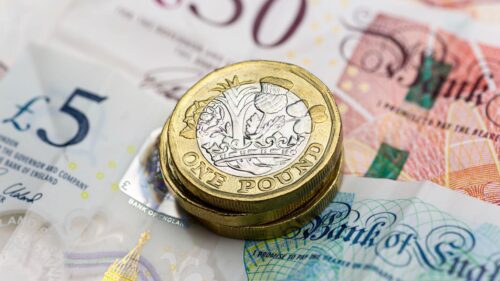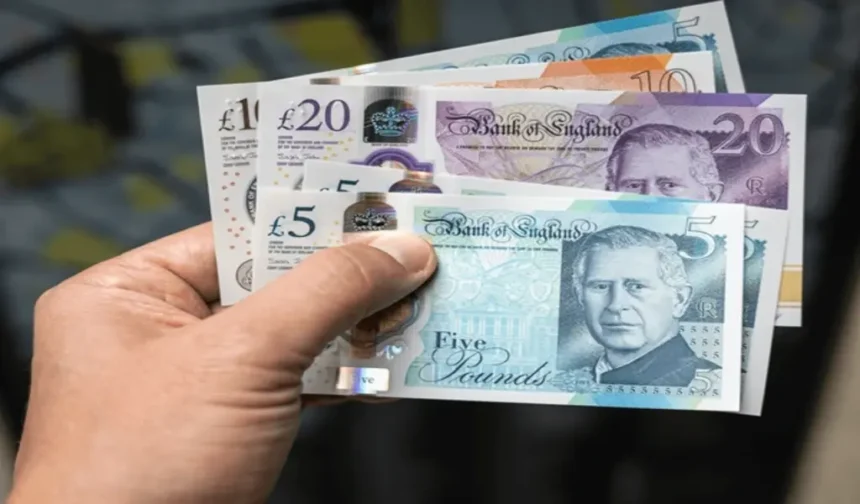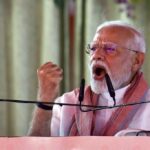The pound has plummeted to its lowest point in nine months due to increased borrowing costs for the UK government.
The decrease occurred as the UK’s 10-year borrowing costs reached their highest level since the 2008 financial crisis, during which bank borrowing nearly ceased.
Economists have cautioned that the government’s efforts to achieve its self-imposed borrowing objective may result in additional tax increases or spending reductions due to the increasing costs.
A spokesperson for the Treasury stated in multiple media outlets that “the government will have an iron grip on the public finances” and that meeting the fiscal rules is non-negotiable.
The chancellor would also “relentlessly pursue economic growth and advocate for the working class.”
The BBC has contacted the Treasury for a response.
The government previously stated that it would refrain from making any announcements until the official borrowing forecast from its independent forecaster is released in March.
“I’m obviously not going to get ahead… it’s up to the OBR (Office for Budget Responsibility) to make their forecasts.”

“The Prime Minister’s official spokesman stated that economic stability and growth are preceded by the stability of the public finances.”
Shadow chancellor Mel Stride asserted that the Chancellor’s substantial borrowing and spending plans from the Budget are “increasing the cost of borrowing for the government.”
“We should be building a more resilient economy, not raising taxes to pay for fiscal incompetence,” he stated in an article on X.
On Tuesday, the cost of financing over 30 years reached its highest level in 27 years, prompting the warning.
In the interim, the pound declined 1.1% to $1.233 against the dollar, its lowest level since April of the previous year.
In general, the government incurs more expenditures than it generates in revenue. To bridge this disparity, it borrows money, but it must repay it with interest.
It can borrow money by selling financial products known as bonds.
According to Gabriel McKeown, the director of macroeconomics at Sad Rabbit Investments, the increase in borrowing costs has “effectively eviscerated Reeves’ fiscal headroom, threatening to derail Labour’s investment promises and potentially necessitate a painful re-calibration of spending plans.”
In recent months, government borrowing costs have increased globally due to investor apprehensions that US President-elect Donald Trump’s new tariffs on products entering the United States from Canada, Mexico, and China would increase inflation.
These policies conflict with distinct apprehensions regarding the expansion of the United States debt and the persistence of inflation, which could also contribute to the elevated cost of borrowing.
On Wednesday, interest rates on 10-year government bonds in the United States also increased, partially due to new price data. However, they declined to over 4.7% at midday, the highest since April.
Changes in the US bond market are having an effect globally, including in the UK, as investors respond.
According to Danni Hewson, the director of financial analysis at AJ Bell, the UK’s increases were comparable to those in the United States.
“US Treasury 10-year yields have jumped to the highest level since April, whilst in the UK 10-year borrowing costs have soared to their highest levels since the financial crisis,” according to her.
Adding further: “It may be a global sell-off, but it creates a singular headache for the UK chancellor looking to spend more on public services without raising taxes again or breaking her self-imposed fiscal rules.”
Ms Hewson stated that “investors are already feeling the jitters” as Donald Trump prepares to return to the Oval Office in less than two weeks.
The Office for Budget Responsibility (OBR), the official forecaster, will commence updating its forecast on government borrowing next month. In late March, the updated forecast will be presented to parliament.

Salman Ahmad is known for his significant contributions to esteemed publications like the Times of India and the Express Tribune. Salman has carved a niche as a freelance journalist, combining thorough research with engaging reporting.














